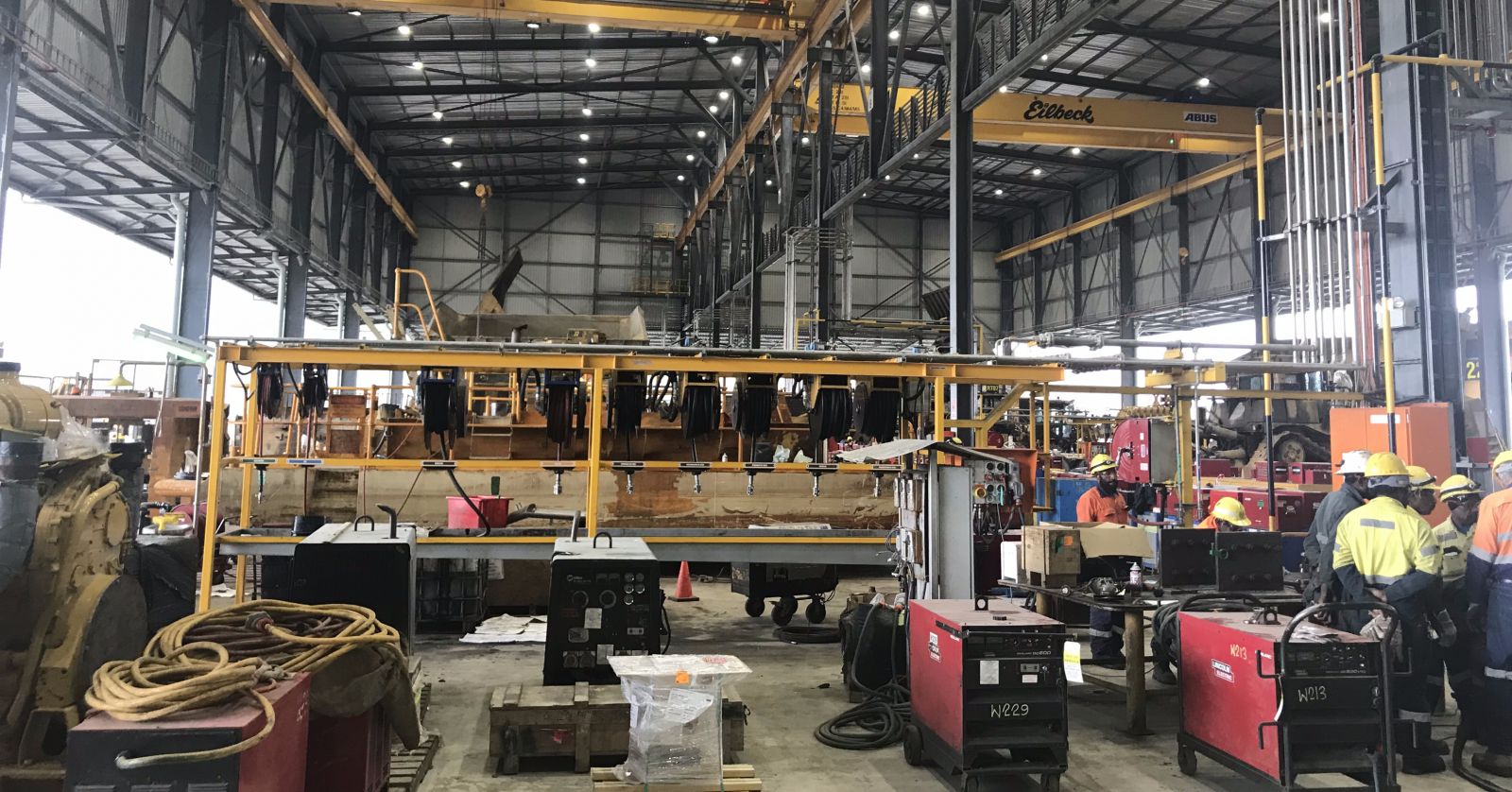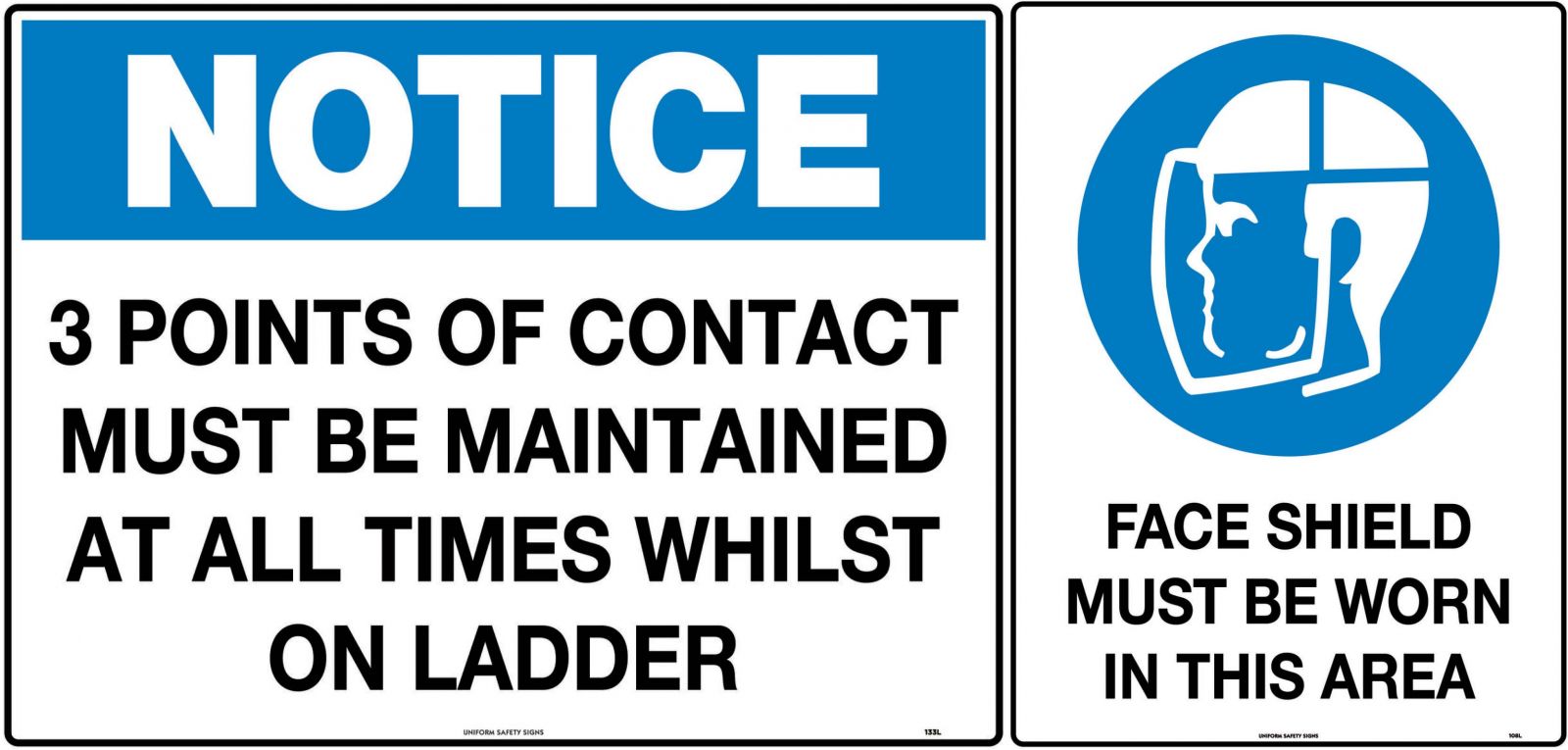A Comprehensive Guide to Road Traffic Control Equipment
Read more...
Author: Harry Watt Date Posted:6 July 2021

Anyone who’s worked in a workshop knows it's no place for silly buggers.
The potential for incidents and injury are almost everywhere, which could cost workers their health, wellbeing, and even their lives. This article aims to protect you in a workshop environment and ensure you’re sleeping in your own bed tonight and not a hospital.
Due to the dangerous nature of machinery and other hazardous items, there exists a risk of injury, meaning the correct procedure must first be outlined then carefully followed.
Here, we run through 9 workshop safety rules to live by in almost any workshop environment. These rules however are not specific to your work environment, and you should always follow the rules and regulations established by your employer.
New employees or members of a workshop should be given an orientation by a trained supervisor on the type of equipment being used, correct procedure and certain rules to follow. While no one rule is more important than the other, this is an essential process to undertake in order to avoid incidents and establish correct procedures. This involves operating manuals for machines as well to ensure the safe usage of dangerous equipment.
Correct PPE should be worn at all times- eye, ear, face protection, steel-capped shoes. Not much explanation needed here. Correct goggle types should be worn depending on the type of machinery being used and hearing protection should be utilised when using power tools or in the presence of machinery operation. Check out our article on eye safety in the workplace for more information. The use of PPE obviously depends on the workshop you’re doing business in. Whether it be a hard hat on a construction site or safety gloves for a welding job, PPE is a critical element of any workshop and must be taken advantage of.
.jpg)
Keep the workplace tidy at all times - No extension cords across walkways, or tools balanced precariously on the edge of tables or shelves. Safety in the workshop comes down to organisation. For example, using correct storage of tools with a wall cabinet is an easy to add element to your workshop guaranteed to improve organisation and general cleanliness. A disorganised workshop is a minefield where hazards exist everywhere. See if you can spot a few in this video: Spot the safety hazards: Warehouse.
Secure all loose clothing and long hair. Every workshop has a horror story of the bloke who didn’t take off his watch and got his hand caught in something. Securing loose clothing and hair is a very simple easy thing to do to reduce the risk of injury. Most people know to check for their ties and even loose jackets, but there are many other risks as well. Loose or baggy pants, for example can cause serious risks. They might not get caught in a machine, but they can cause people to trip and fall, which can be deadly in many facilities. Loose clothing is also a fire hazard. Whether it is a welder or someone who works with a machine that reaches high temperatures, loose clothing can quickly catch fire, putting the entire workplace at risk.
When using machinery where a risk of injury is present, avoid working alone. Hopefully you’ve all got at least one mate at work you can work with while operating dangerous machinery. If not, we suggest you make one. If a serious injury is sustained such as being knocked unconscious, it’s important for another co-worker or supervisor to be present to get you looked after as soon as possible.
Do not operate any machinery under the influence of alcohol or other substances. Not much explanation needed for this one. When you rock up stoned, drunk or both you not only put yourself at risk, but everyone around you. Check out this video that explains why it's just not on rocking up early to work after a big night. It may sound unnecessary, but if you’ve got mates that are constantly showing up to work in poor shape or you know they’re under the influence of something, pull them up. If you stop and think about what the consequences of their actions could be you’ll understand that you have a duty to do so. In doing this you’re helping protect yourself, your mates and lastly the bloke him/herself.
This is an essential workshop safety rule as it highlights the importance of following the procedure specific to your workplace. Safety signage and other reminders of correct practice should be present if machines exist in the workshop. Each workshop is different and so has different rules and regulations. This also involves the use of safety tools to significantly reduce risk of injury when operating things like power saws. Some examples of these are push sticks, miter gauges, custom built sleds and featherboards. Make sure to follow the rules specific to your workshop and not the ones from previous jobs. Here’s an example:

While somewhat annoying, it's essential these things are reported not for just your well-being but for the safety of everyone using the workshop. Clearly, this can be difficult if your supervisor or superior doesn’t take too kindly to ‘dramas,’ but in the interest of incident and injury prevention, just report it and be on your way
It's always better safe than sorry. When it comes to your safety and the safety of others there are no dumb questions. If you’re looking to avoid being the target of a few jokes about your intelligence, remember there’s probably at least one other person wondering the same thing. You could save someone from injury or worse by simply asking the questions others are too afraid to ask
---
What's important to keep in mind is that while these are your stock-standard everyday rules to go by, workshop safety rules differ depending on the environment. Keep in mind, safety is the number one priority. Check out some of the products at Workshop360 that can ensure that your work environment is a safe one.
As mentioned above, it’s important to follow procedure in the shop, so take a look at our free checklist that covers the important aspects of workshop safety. Stick it on the shop door, stick it on your car or even stick it on your bathroom mirror. What’s important is that everyone that steps foot in the workshop knows how to keep themselves and others safe and in one piece
|

Read more...

Read more...

Read more...

Read more...

Read more...

Subscribe to our newsletter to get exclusive deals and updates!
 Afterpay
Afterpay Bank Deposit
Bank Deposit PayPal Express
PayPal Express Web Payments
Web Payments Web Payments
Web Payments MasterCard
MasterCard Visa
VisaWelcome to our website. If you continue to browse and use this website, you are agreeing to comply with and be bound by the following terms and conditions of use, which together with our privacy policy govern EagleXP T/A Workshop360’s relationship with you in relation to this website. If you disagree with any part of these terms and conditions, please do not use our website.
The term ‘EagleXP T/A Workshop360’ or ‘us’ or ‘we’ refers to the owner of the website whose registered office is Unit 1, 18 Gravel Pit Road, Darra, QLD, 4076. Our ABN is 14 622 985 068. The term ‘you’ refers to the user or viewer of our website.
The use of this website is subject to the following terms of use:
This Privacy Policy describes how your personal information is collected, used, and shared when you visit or make a purchase from www.workshop360.com.au (the “Site”).
When you visit the Site, we automatically collect certain information about your device, including information about your web browser, IP address, time zone, and some of the cookies that are installed on your device. Additionally, as you browse the Site, we collect information about the individual web pages or products that you view, what websites or search terms referred you to the Site, and information about how you interact with the Site. We refer to this automatically collected information as “Device Information”.
We collect Device Information using the following technologies:
Additionally, when you make a purchase or attempt to make a purchase through the Site, we collect certain information from you, including your name, billing address, shipping address, payment information (including credit card numbers & payment account numbers Paypal, Afterpay, ZipPay), email address, and phone number. We refer to this information as “Order Information”.
When we talk about “Personal Information” in this Privacy Policy, we are talking both about Device Information and Order Information.
We use the Order Information that we collect generally to fulfil any orders placed through the Site (including processing your payment information, arranging for shipping, and providing you with invoices and/or order confirmations). Additionally, we use this order information to:
We use the Device Information that we collect to help us screen for potential risk and fraud (in particular, your IP address), and more generally to improve and optimize our Site (for example, by generating analytics about how our customers browse and interact with the Site, and to assess the success of our marketing and advertising campaigns).
We share your Personal Information with third parties to help us use your Personal Information, as described above.
We also use Google Analytics to help us understand how our customers use the Site-you can read more about how Google uses your Personal Information here: https://www.google.com/intl/en/policies/privacy/. You can also opt-out of Google Analytics here: https://tools.google.com/dlpage/gaoptout.
Lastly, we may also share your Personal Information to comply with applicable laws and regulations, to respond to a subpoena, search warrant or other lawful request for information we receive, or to otherwise protect our rights.
As described above, we use your Personal Information to provide you with targeted advertisements or marketing communications we believe may be of interest to you. For more information about how targeted advertising works, you can visit the Network Advertising Initiative’s (“NAI”) educational page at http://www.networkadvertising.org/understanding-online-advertising/how-does-it-work.
You can opt out of targeted advertising by:
Facebook - https://www.facebook.com/settings/?tab=ads
Google - https://www.google.com/settings/ads/anonymous
Bing - https://advertise.bingads.microsoft.com/en-us/resources/policies/personalized-ads
Additionally, you can opt-out of some of these services by visiting the Digital Advertising Alliance’s opt-out portal at: http://optout.aboutads.info/.
You can also do a blanket opt-out of targeted advertising at http://www.youronlinechoices.com.au/ for companies who have signed up to “Your Online Choices”.
This website uses the Google AdWords remarketing service to advertise on third party websites (including Google) to previous visitors to our site. It could mean that we advertise to previous visitors who have completed a task on our site, for example using the contact form to make an enquiry or making a purchase.
This could be in the form of an advertisement on the Google search results page, or a site in the Google Display Network. Third-party vendors, including Google, use cookies to serve ads based on someone’s past visits to this website. Of course, any data collected will be used in accordance with our own privacy policy and Google’s privacy policy.
You can set preferences for how Google advertises to you using the Google Ad Preferences page.
Please note that we do not alter our Site’s data collection and use practices when we see a Do Not Track signal from your browser.
Under Australia Consumer Law you are entitled to rights regarding the collection and usage of your information. For more information on your rights visit the ACCC website: www.accc.gov.au
When you place an order through the Site, we will maintain your Order Information for our records unless and until you ask us to delete this information.
We may update this privacy policy from time to time in order to reflect, for example, changes to our practices or for other operational, legal or regulatory reasons.
For more information about our privacy practices, if you have questions, or if you would like to make a complaint, please contact us by e-mail at admin@workshop360.com.au or by mail using the details provided below:
Unit 1/18 Gravel Pit Road, DARRA, QLD, 4076, AUSTRALIA


Add your favourites to cart

Select Afterpay at checkout

Log into or create your Afterpay account, with instant approval decision

Your purchase will be split into 4 payments, payable every 2 weeks
All you need to apply is to have a debit or credit card, to be over 18 years of age, and to be a resident of country offering Afterpay
Late fees and additional eligibility criteria apply. The first payment may be due at the time of purchase
For complete terms visit afterpay.com/terms